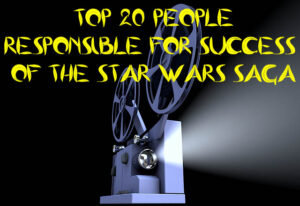“Wonderfalls” (2004, Fox) – sadly but inevitably and appropriately a one-season wonder – makes me happy when I watch it. It’s not a happy show, oddly. It’s about 24-year-old Jaye Tyler (Caroline Dhavernas, a celebrity crush entirely because of this role), a Niagara Falls native who is mentally ill. She believes stuffed animals and chotchkes talk to her, giving vague instructions that she must decipher in each of the 13 episodes (four aired, nine are exclusive to the DVD).
Later in this post, I’ll argue that “Wonderfalls” is an all-time great mental-health exploration, as iconic as the sculpture next to the Falls – the noble Maid of the Mist who stands at the prow of a boat. But first I must admit that this creation of now-super-producers Todd Holland, Bryan Fuller and Tim Minear holds a place in my heart because Jaye and bartender Eric (Tyron Leitso, later of “Being Erica”) are so darn cute.
The Jaye-and-Eric saga
When they meet, fireworks go off in their eyes. (But rest assured, “Wonderfalls’ ” quirkiness doesn’t usually go to that extreme. Among Fuller shows, it’s cozily positioned between the darker “Dead Like Me” and the whimsical “Pushing Daisies.”) With the magnetic chemistry between Dhavernas and Leitso, thus begins the usual TV show thing of finding ways to keep them apart. It’s built right in: Jaye has that talking-to-animals issue, and Eric is married.

“Wonderfalls” (2004)
Fox, 13 episodes
Creators: Todd Holland, Bryan Fuller
Stars: Caroline Dhavernas, Katie Finneran, Tyron Leitso
His wife had cheated on him on their honeymoon and he has stayed in Niagara Falls – living out of the Barrell’s back room – moping and then pining after Jaye. For her part, Jaye is both crazy and a certain type of heartbreaker. Guys fall for her pretty girl-next-doorness, but she hasn’t felt love in return.
Jewel Staite enters as Eric’s wife Heidi in “Lovesick Ass” (8), the first of the show’s four-episode stretch where it jumps from very good to great. We should pause to appreciate how detestable Staite is in the villain role, displaying versatility after her purely lovable turn as Kaylee on “Firefly” in the previous TV season.
If you stop to think about her – which the writers never encourage us to do — Heidi isn’t that bad. Her primary negative trait is that she’s not Jaye. This requires the writers to do some tip-toeing in “Caged Bird” (13) to give us a grace-note happy ending.
Before that, we see the intended original ending to “Caged Bird,” sad enough to warrant the use of Sarah McLachlan’s “Dirty Little Secret.” It’s the second-best McLachlan-backed ending to a TV episode, trailing “Full of Grace” in “Buffy’s” “Becoming, Part 2.” It makes me happy – in the “sad but understood” sense of “happy.”
Mental-health struggles
The reason why “Wonderfalls” ranks up there with “Crazy Ex-Girlfriend” as an elite 21st century portrayal of mental-health struggles is because it’s ultimately warm-hearted toward its characters. Jaye’s condition is quirky, but everyone in this fictional Niagara Falls (partially filmed in Toronto) is quirky.
Jaye has residual Nineties-teen ennui and she is self-centered, but she has a big heart. She is not proud of being a heartbreaker. She’s different from her family (father Darrin, mother Karen, sister Sharon and brother Aaron), but she loves them, and they love her. They just don’t know what to do for her – even her dad (William Sadler, in a great post-“Roswell” turn) and mom (Diana Scarwid, also grasping this show’s quirky tone), a doctor and author, respectively.
Jaye’s struggle to find herself is positioned as a Gen-Y thing (2004 predates the popularization of “millennials”) in “Karma Chameleon” (3), as she stands in for “Jen Why” for a magazine profile. However, Dhavernas is two years older than her character, so I claim Jaye for Gen-X.
Refreshingly, this isn’t a glamorized TV portrayal of struggle, played out from a swank NYC apartment that the character couldn’t afford in reality. Jaye lives in a trailer park, works at the titular souvenir shop (which isn’t the wild, colorful type of good time you might think), and does less with her degree from Brown than Rory Gilmore does with her Chilton education. She is adrift in a grounded way.
Not bound to a generation
Additionally, “Wonderfalls’ ” lessons are timeless. One of them is “Don’t be so hard on other people” as demonstrated by the Tylers’ general (if largely clueless) notion of helping Jaye find her path. A couple times, “Wonderfalls” episodes are mean toward a supporting character, and these moments stand out as being writing/directing miscalibrations – particularly “Totem Mole” (12), the series’ only bad installment.
Generally, it aims to give everyone a happy ending, fitting with the theme of random karma. For instance, the delivery guy in “Wax Lion” (1) loses his wife (“Invasion’s” Kari Matchett) because she realizes she’s a lesbian, and his date, Sharon (Katie Finneran, later of one-season wonder “The Inside”), for the same reason. But the hospital nurse finds him cute, and they start dating.
Another lesson is “Don’t be so hard on yourself.” This is subtle, and it might be my own reading more than what the show intended. The “because we’re canceled” happy ending happens by a rare bit of good luck (so perhaps another lesson is “Your luck will even out”). Jaye does tell the wax lion to shut up – and it does – just this once. But it’s too pat to be final; Jaye would likely encounter further troubles in a theoretical episode 14.
Jaye’s – and the show’s – good heart
Technically, Jaye doesn’t have agency throughout these 13 episodes. She follows instructions. They lead her into bizarre situations and she reacts, often in flailing fashion. Things fall into place, but she can’t have much sense that she did it, since she was just following instructions and then guessing. She hasn’t learned anything substantial.
But I sense she has become OK with living with herself. She even loves the stuffed animals – in a love-hate way – as we see via her concern about their fates when Aaron (“Pushing Daisies’ ” Lee Pace) cleans them out of her trailer. The last time we see her, Jaye is in a place of happiness because of luck, but I sense she’ll find that place more often in the future. With time, she might even understand that talking to stuffed animals is her superpower.
It’s a stretch to say Jaye would eventually become a psychiatrist herself, but she will always be someone who helps people in big or small ways. That mirrors “Wonderfalls” itself, which boosts me up with the bouncy notes of XTC musician Andy Partridge’s theme song. We’re all bopping along in our barrels. Some of us slip over the edge more than others, but we’re not alone. After all, there was once even a network TV show that understood us.
Ranking the episodes
- “Safety Canary” (episode 9, written by Liz W. Garcia and Alexander Woo) – All the show’s major couples — including the surprising but cute Majandra (Tracie Thoms) and Aaron — get together, with a pair of mating zoo birds playing as a perfect metaphor.
- “Cocktail Bunny” (11, Fuller) – When Jaye’s heart breaks in the backroom of the Barrell and she literally says “Ow,” it sums up why I love her, Dhavernas and the show. As Fuller outlines his writing philosophy in the commentary: “Pain makes us like people.”
- “Lying Pig” (10, Krista Vernoff and Abby Gewanter) – The Jaye-versus-Heidi rivalry goes full bore amid a brisk story where Heidi fakes amnesia about cheating on Eric.
- “Lovesick Ass” (8, Dan E. Fesman and Harry Victor) – Notable outside the show for a fine child-actor turn by Spencer Breslin, it’s known in fan circles for the giggle-worthy first kiss between Jaye and Eric.
- “Muffin Buffalo” (6, Gretchen J. Berg and Aaron Harberts) – “American Pie’s” Eddie Kaye Thomas gives a great guest turn as a former fat guy whom Jaye has been spying on as a hobby. This is a good example of Jaye and the teleplay giving decent treatment to someone who would be the butt of the joke on most shows.
- “Wax Lion” (1, Holland and Fuller) – The foundation is nicely laid out, from Jaye’s connection to the talking animals, to her connection to Eric, to most of the Tyler family members’ specific quirks.
- “Karma Chameleon” (3, Minear) – Sarah Drew gives a cute guest turn as a stuttering new employee at Wonderfalls who begins to mimic Jaye, amusingly to Jaye’s annoyance.
- “Barrell Bear” (7, Minear and Fuller) – The most Niagara Falls-centered episode evocatively taps into the mythology of the first woman to survive the Falls, with a strong guest appearance by Golden Girl Rue McClanahan.
- “Pink Flamingos” (2, Berg and Harberts) – It’s entertaining to see Jaye play off her high-school frenemy (Chelan Simmons as the wonderfully named Gretchen Speck-Horowitz), but the episode is a little harsh by “Wonderfalls’ ” standards.
- “Wound-Up Penguin” (4, Garcia) – Actual religion combines with Jaye’s quasi-religious journey as she helps a nun regain her faith, but the narrative is on the predictable side.
- “Caged Bird” (13, Vernoff) – Although it has a powerful original ending with that McLachlan track, and then the fan-service happy ending we want and need, the hostage plot at Wonderfalls drags.
- “Crime Dog” (5, Vernoff) – The tone from the detective interrogating Jaye is on the mean side, and the confusing narrative undercuts the suspense in this only episode featuring the Tylers’ live-in housekeeper.
- “Totem Mole” (12, Victor and Fesman) – The only outright bad episode is boring despite the possibilities in exploring a Native American town. At one point, it features lesbian Sharon in a sauna with her attractive high school rival, yet whiffs on the chance to do something funny.


